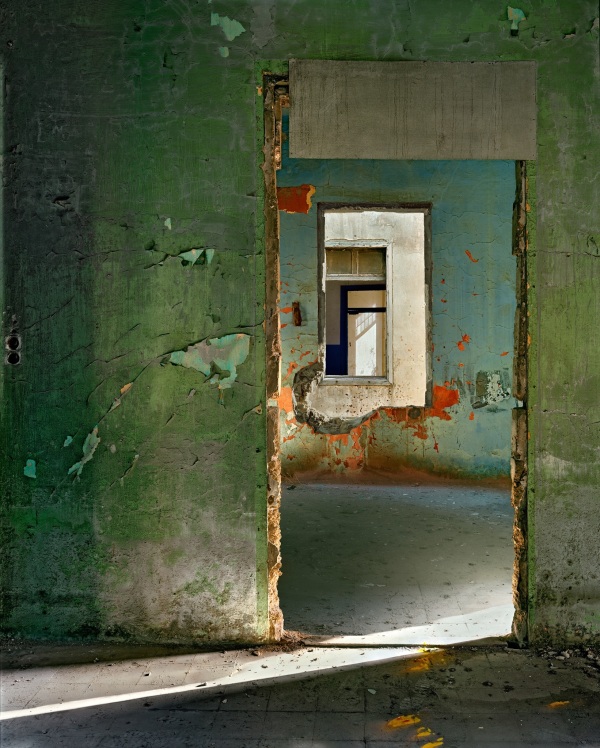Robert Polidori: Ecophilia/Chronostasis
-
-
Paul Kasmin Gallery is pleased to announce its inaugural exhibition of acclaimed photographer Robert Polidori, on view from September 8 to October 15, 2016 at 515 W. 27th Street.
This exhibition will be the first U.S. show to feature Polidori’s “dendritic cities” images, a body of work begun in 2007. He appropriates the term “dendritic” from the branching extensions of a cell structure and uses it to describe the auto-constructed cities (as opposed to pre-planned urban developments) that have appeared as a result of industrialism in cities around the world, including Amman, Mumbai and Rio de Janeiro. The exhibition will feature three monumental photographs taken in India, including an expansive mural of a street in Mumbai known locally as “60 Feet Road.”
-
Long sensitive to the shared terrain between photography and cartography, Polidori has stepped outside of the traditional photographic “frame” of an image, and instead has adopted an approach where the framing is based upon the subject of the image. As Polidori describes it, “its execution came to demand labors more in line with mapping strategies than traditional photographic compositional framing.”
Rather than isolating one particular section or façade of the narrow street, Polidori set out to photograph the entire length of the 60 Feet Road within one long continuous printed photograph. Like a tracking shot within a film, Polidori has compiled 22 separate photographs into one. The sequence of 8x10 color sheet film has been scanned and computer-stitched into a continuous déroulement, like an Asian scroll. Spanning a length of forty feet, viewers can fix their attention on minute details that would otherwise go unnoticed. In “Amrut Nagar,” comprising four separate panels, Polidori photographs a complete 180° view of a populated mountainside from one single vantage point.
Also on show is a selection of photographs from Polidori’s 2010 project in Lebanon, “Hotel Petra.” The photographs explore the interior of a once grand and luxurious hotel in downtown Beirut that was severely damaged during the civil war of the 1980s and left abandoned for 20 years. In contrast to the teeming metropolises in the “dendritic cities,” the photographs of Hotel Petra reveal a building quietly succumbing to natural forms of decay and abandonment: countless layers of paint have flaked and faded away, resulting in a multilayered palette of color and design. This site gives a voice to Polidori’s thesis on modern painting, inasmuch as the compositions of gradually evolving and decaying paint closely resemble the intentional concerns of many modern and contemporary painters; only in this case the genesis of the phenomena was neither fixed nor intentional, but rather the unintentional summation of subsequent labors of various painters and workmen acting and modifying their surfaces at different times over decades, and as such, can be seen as “natural” or “unconscious” collective super-ego documents. This slow deterioration bears witness to the history as “seen” and “lived” by the walls themselves. Polidori captures the poetic quality of the ruin, and in the photographic stillness, the rooms are portrayed as metaphors and vessels for memory.
Coinciding with the exhibition, Steidl will be releasing two new publications: Hotel Petra and 60 Feet Road (Bhatiya Nagar Facades), which focuses entirely on the single photograph of the city block. Texts by the photographer are included in both books.
Robert Polidori (b. 1951) has published over fifteen monographs, most recently Chronophagia and the two volume Rio. These publications follow the three volume Parcours Muséologique Revisité, an extensive compilation of the thirty years he has spent photographing the Château de Versailles. He has received the World Press Award (1998) and the Alfred Eisenstaedt Award for Magazine Photography (1999, 2000). Over the course of his career, he has had several major solo exhibitions, notably a mid-career retrospective at the Musée d'art contemporain de Montréal, “Fotografias” at the Instituto Moreira Salles in Rio de Janeiro, and “After the Flood” at the Metropolitan Museum of Art in 2006, which presented his photographs of the aftermath of Hurricane Katrina in New Orleans. His work is held in numerous collections including the Los Angeles County Museum of Art, the Metropolitan Museum of Art, the Museum of Modern Art, New York, the Victoria and Albert Museum, London, and the Bibliothèque Nationale, Paris. He lives and works in Ojai, California.
For more information please contact info@kasmingallery.com
For press inquiries, please contact press@kasmingallery.com -
Works


